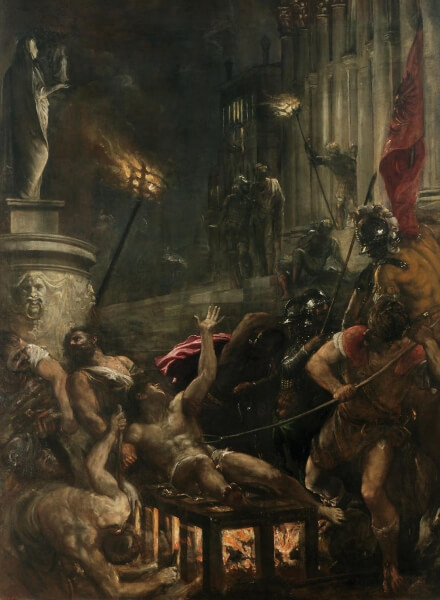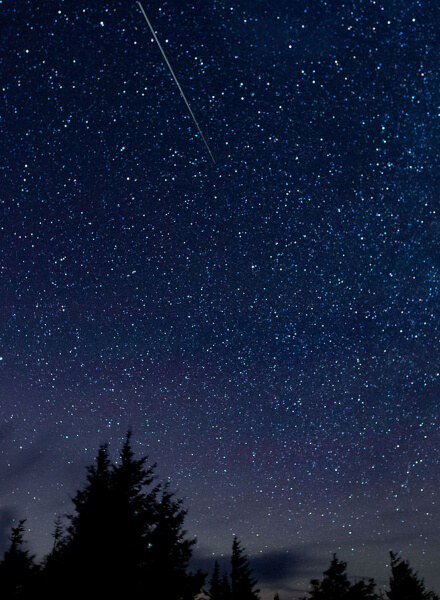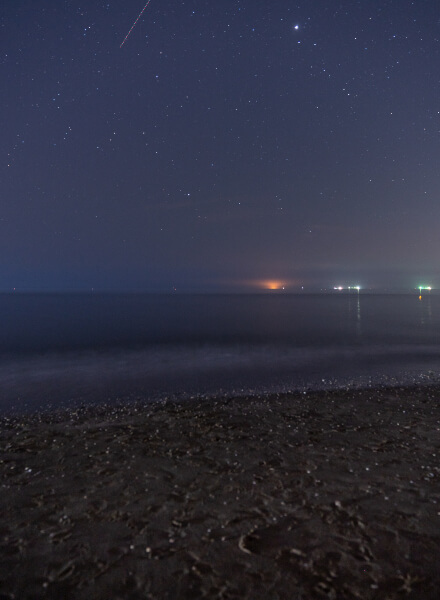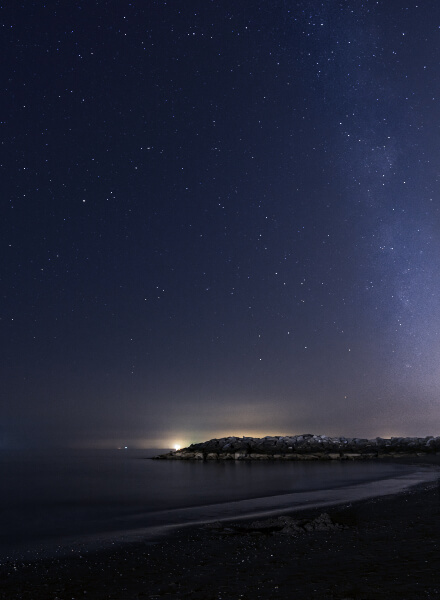Perseids 2024: a show that illuminates summer nights
For millennia, the warm summer nights between July and August have offered a unique astronomic spectacle, a time when the night sky lights up with shooting stars, giving a breathtaking experience to those lucky enough to observe it.
This astronomical phenomenon, known as the Perseids, is one of the most anticipated events of the year, a chance to gather with friends and family, share stories and wishes, and reflect on the beauty and immensity of nature around us.
The story of the Perseids: Laurentius’ tears
The fascinating astronomical phenomenon of the Perseids, which lights up the summer skies every year, has captured the imagination of mankind for millennia, resulting in evocative narratives and poetic interpretations. This spectacular meteor shower, in fact, brings with it a rich history of myths and legends, which are still intertwined with the different cultures of the world.
Ancient Greece
In ancient Greece, the Perseids were associated with the myth of Perseus, the hero who gave – and still retains – the name of this meteor shower.
According to legend, Zeus visited Danae, Perseus’ mother, in the form of golden shower. This poetic image was later associated with the shower of shooting stars, seen as a divine manifestation that recalled that heavenly visitation.
The Greeks observed this phenomenon with wonder and respect, considering it a sign of good luck and a moment of connection between the earthly and divine worlds. The Perseids thus became both an astronomical event and a time of reflection and celebration in ancient Greek culture.
Ancient Rome
In Ancient Rome, however, the Perseids took on a particular meaning linked to the figure of St. Lawrence.
According to Christian tradition, St. Lawrence, a deacon of Rome, suffered martyrdom on August 10, 258 AD, burned alive on a gridiron. The temporal coincidence between his martyrdom and the peak of the meteor shower led to the birth of the legend according to which the shooting stars were the tears of the saint (from which the popular name of “tears of San Lorenzo” derives) or the sparks of the grill on which he was martyred, depending on the interpretation.
This belief spread widely in Roman popular culture and then in medieval Christian culture, helping to create a deep link between the astronomical event and spirituality. Even today, for the Italian population, this celestial event is closely linked to the figure of San Lorenzo and the date of August 10.


When can the Perseids be observed in 2024?
The Perseids, an annual meteor shower known for its intensity and spectacularity, occur when the Earth passes through the debris left by the comet Swift-Tuttle in its orbit around the Sun. These fragments, entering the Earth’s atmosphere at high speed, burn up creating bright trails in the night sky, commonly called “shooting stars“.
In 2024, this famous meteor shower will be visible from the end of July until the third week of August, with a peak intensity expected between the night of August 12 and 13. During these nights, in clear sky conditions and away from light pollution, up to 100 meteors per hour can be observed.
How to watch shooting stars
To make the most of the spectacle offered by the Perseid phenomenon, it is essential to choose the right place and follow a few simple precautions.
- Choose a dark place
The most important factor for observing shooting stars is certainly the absence of light pollution. Artificial lights in cities and towns can blur the visibility of the night sky, making it difficult to see fainter meteors. For this reason, it is advisable to move away from urban areas and look for places surrounded by nature.
- Let your eyes get used to the darkness
Once you reach the vantage point, give yourself at least 20-30 minutes to allow your eyes to fully adjust to the darkness. Therefore, during this time, avoid looking at light sources such as smartphones or flashlights, which could impair night vision.
- Choose the right time
If – for obvious reasons – the Perseids are more visible during the night, the best time for observation is generally after midnight and until dawn. In these hours, in fact, the Earth is moving frontally with respect to the comet’s debris trail, increasing the number of visible meteors.
- Find a convenient location
Observing shooting stars, as exciting as it is, requires a good deal of patience. So, bring a blanket or a towel with you to hang out, and maybe even some pillows to be more comfortable. Lie down and look upwards and give you a wide view of the sky and catch meteors wherever they appear.
- Orient yourself in the night sky
Although the Perseids appear to come from the constellation Perseus (from which they take their name), they can be seen anywhere in the sky. However, knowing Perseus’ location can help you find your way around better. Look for the “W” feature of the constellation Cassiopeia and look slightly to the southeast: there you will find Perseus!
- Respect the environment
Always remember that you are enjoying a precious natural environment. So, respect the place where you are and the surrounding ecosystem: do not leave rubbish, do not disturb the local fauna and, if possible, avoid using torches or other light sources that could disturb other observers or the animals’ nightlife.
The beach of Camping Ca’Savio offers ideal conditions for astronomical observation, thanks to its privileged position away from the large urban centre’s. But what makes this place even more special is the conscious choice of the campsite to leave this part of the beach and the path that leads you naturally in the dark. This decision allows guests to look up and admire the starry sky in all its magnificence, without excessive light interference.


Remember that the Perseids is not just an astronomical phenomenon: whether you are with family, as a couple or with friends, let yourself be amazed by the beauty of the cosmos and the magic of a summer night on the beach. And who knows, maybe one of the wishes expressed under the shooting stars will come true, giving you an even more precious memory of your holiday at Ca’Savio.